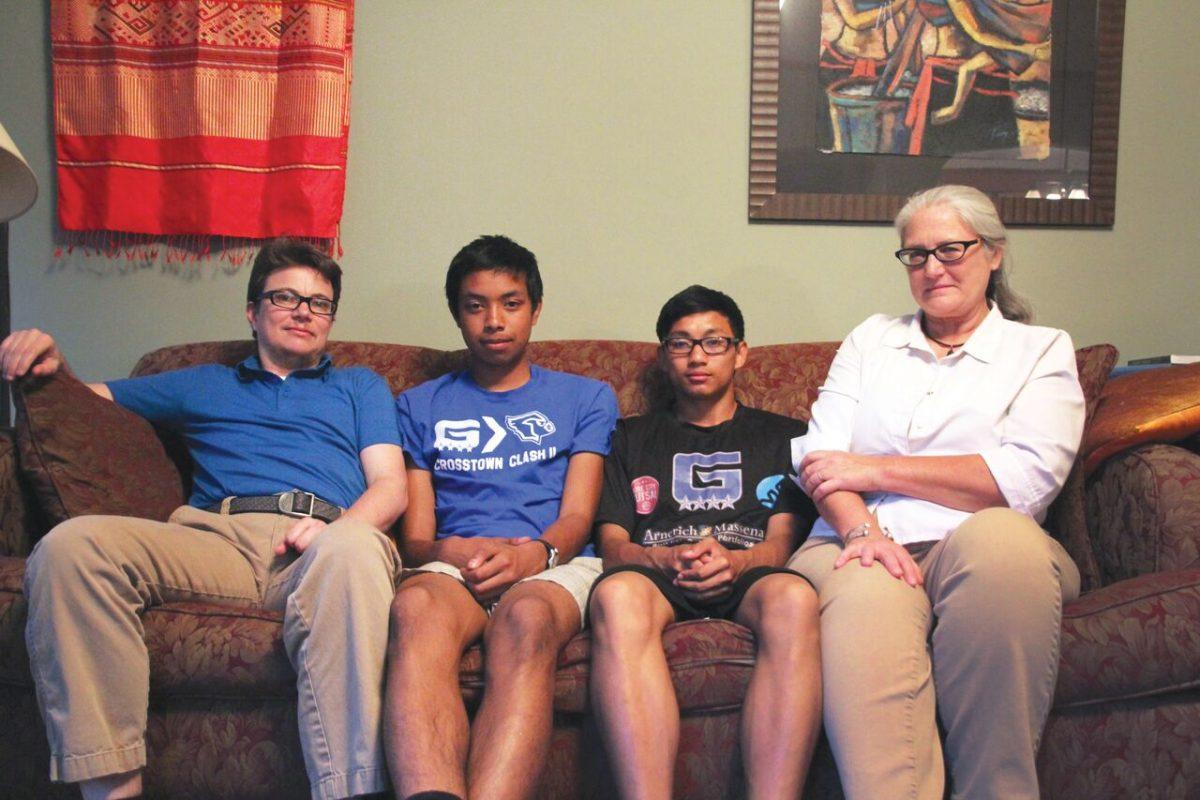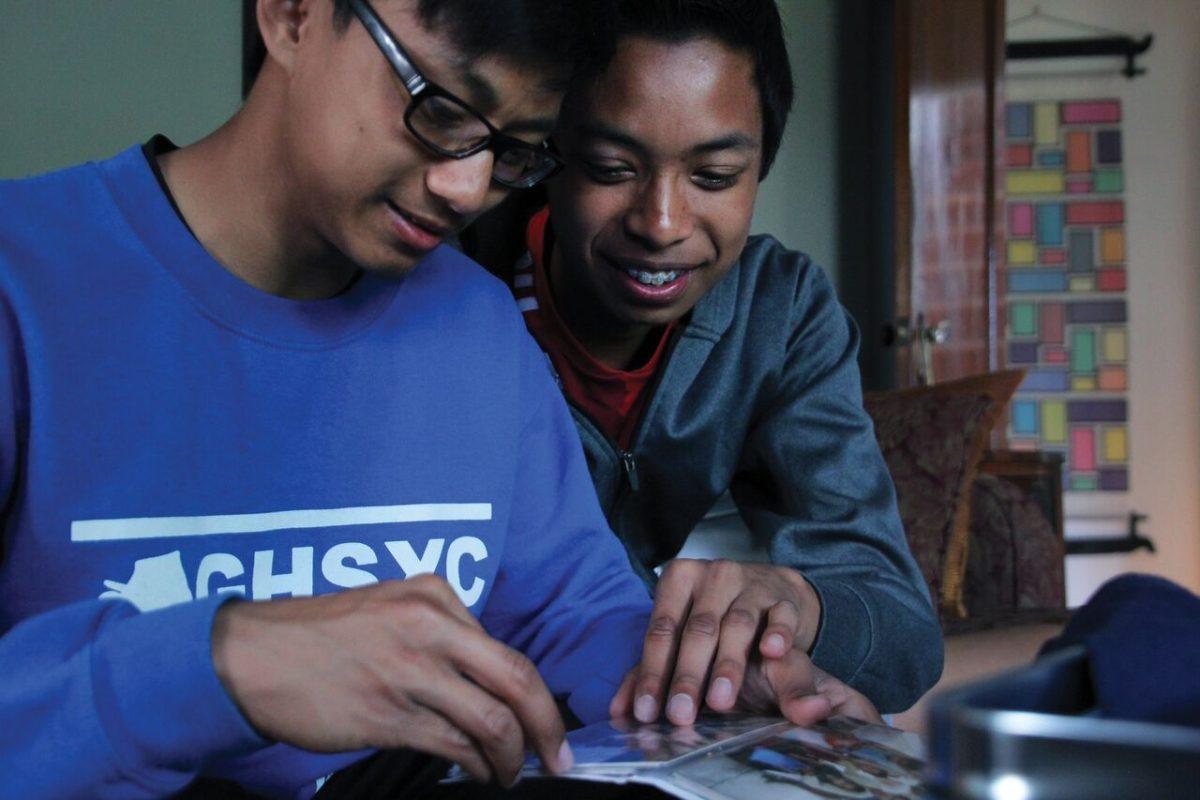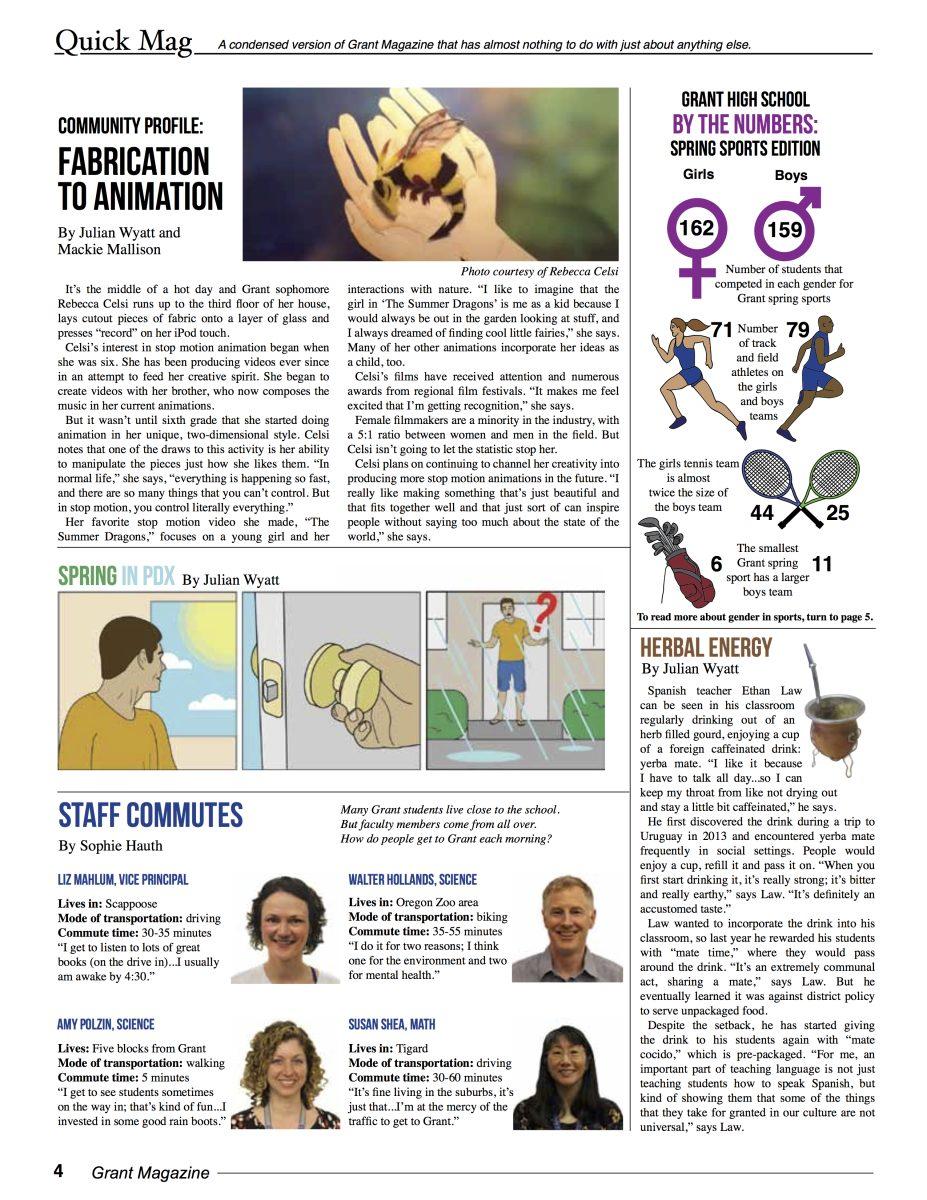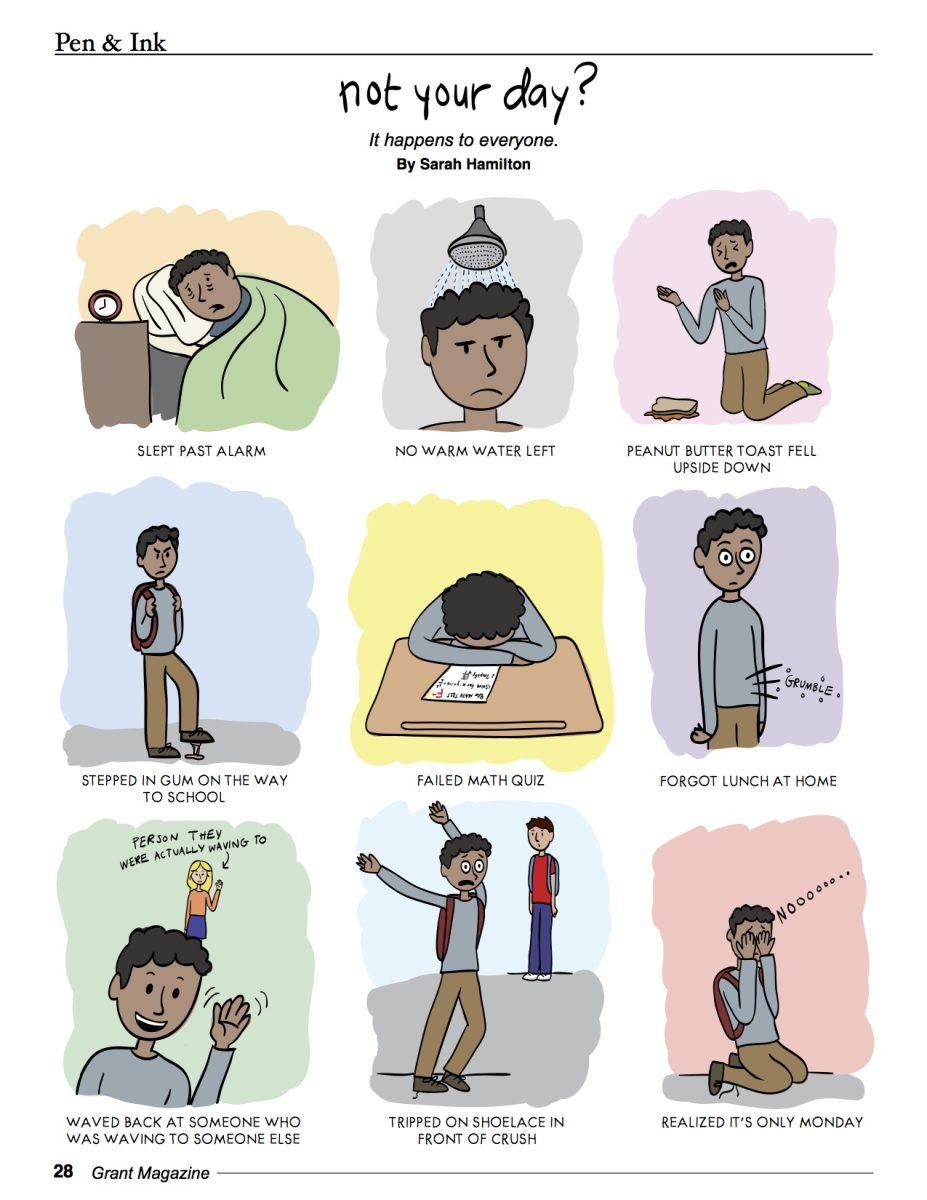Lydeth and Kounann Gullam remember the visit to their birthplace, Cambodia, last winter. As they stood in silence, the children of American tourists chased each other, oblivious to their location’s history.
The brothers, who are students at Grant High School, walked across the orange and white tiled floors of the Tuol Sleng Museum of Genocide in Phnom Penh. They looked up at the thousands of images in the rooms. Each one portrayed the looming memories of the country’s war-torn suffering.
The brothers, adopted by an American couple, wandered through the museum, a site that was once home to thousands of Cambodians who were imprisoned, tortured and killed during the Khmer Rouge reign that started more than 40 years earlier. Mugshots of the prisoners lined the concrete walls. Blood still stained the floors.
Even decades after the genocide, they felt a sense of connection to the prisoners.
“It affected us a lot more than it did for our parents,” says Lydeth Gullam, a sophomore. “Because it wasn’t their history.”
For the Gullam brothers, both 16, the museum was a hard-hitting reminder of their origins. They are just two of the 1,992 children adopted from Cambodia to the U.S. between 2000 and 2002, a small percentage of the total international adoptions between those years.
Following World War II, as international adoption grew, Americans began looking at overseas adoptions to start families. Between 1953 and 1962, international adoptions climbed to a near total of 15,000 and peaked in 2004, when close to 23,000 children were adopted. But since then, the numbers have been in decline. There were only 5,644 international adoptions by the United States in 2015.
“We’re getting more and more effective with family preservation overseas as well as supporting domestic adoptions overseas, which leads to a smaller number of children needing to be placed internationally,” says Steve Kalb, director of adoptee services at Holt International, an adoption agency based in Oregon. “(But) there are a lot of different factors that go into the decline.”
Among these factors, intricate geopolitical issues have contributed to the decline in international adoption. But the U.S. continues to hold the highest rate in the world of adoptions from other countries.
With that comes a range of families that have to navigate issues of race, ethnicity and culture that come with international adoption. “Particularly Portland, which is 79 to 80 percent Caucasian, a transracial family has different developmental tasks,” says Meredith Reid, a therapist based in Northeast Portland who focuses on adoptees and their families.
“Autonomy, identity, belonging, loss, rites of passage – we all go through that,” she says. “And when adoption is also part of the mix, we’ve got to consider the complexities of identity development when someone belongs to more than one family or racial identity.”
Adoptees Lydeth and Kounann Gullam have pushed to keep their Cambodian culture a part of that identity. Since their adoptions in 2000 and 2002, respectively, their parents have taken the family on frequent trips to Cambodia. With this first-hand connection to the culture of their birth country, the brothers seek to share their backgrounds with their peers.
“The transition to a new culture and a new family life is a really big transition, especially if a kid is moving around the world”- Meredith Reid
In 1999, when international adoption numbers were climbing to an all-time high, Myles and Elizabeth Gullam were contemplating starting a family. “We were listening to NPR, and they talked about adoption, and it was like; ‘That’s it. We’re adopting.’ We just kind of knew,” recalls Myles Gullam.
After six months of paperwork and home inspections, the Gullams settled on Cambodia at random, a country they knew little to nothing about. Given just a faxed picture of their new baby, the parents left their home town of Arcata, Calif., to begin their 7,600 mile journey to Phnom Penh.
Arriving in the humid June air of Cambodia, the couple was ushered straight to the orphanage where their son awaited. Both were unsure of what was ahead of them.
The orphanage was little more than a few basic wooden buildings. Around them, babies slept in hanging woven baskets. Resources were scarce but caretakers doted on the children, trying to make do with too little food and too many kids.
Elizabeth Gullam remembers the first time she laid eyes on Lydeth. “I cried. He looked just like his photograph,” she recalls. A smiling, healthy baby boy, he was quickly immersed in a new American lifestyle.
Two years later, Lydeth Gullam and his family made their second trek back to Cambodia, this time for their second child, Kounann. The Gullams were fortunate; as of December 2001, adoption processing between Cambodia and the U.S. was starting to close.

Kounann Gullam’s would be one of the final adoptions between the two countries. Bringing home another child from the same orphanage, they thought they knew what to expect.
But the transition for Kounann Gullam, a three-year-old adoptee, was different than that of an infant, the Gullams learned. Kounann Gullam was used to life in a small Cambodian orphanage and moving to fast-paced California was a shocking contrast.
“I had no clue what was going on. So, to me, an adoption meant separating me from the family I had kind of built off of,” Kounann Gullam, now a junior at Grant, remembers. “It was basically like me being taken away from the closest thing I had to a family, so it was pretty scary.”
Kounann Gullam’s experience, however, would prove similar to many international adoption accounts. Reid, who’s certified in adoption therapy, has seen this in children before.
“The transition to a new culture and a new family life is a really big transition, especially if a kid is moving around the world,” she says. “That transition can range from being a little bit bumpy to being really startling to a kid.”
Kounann Gullam still remembers this time of confusion.
“It was very difficult for me. I mean on top of everything, like learning new customs and stuff, learning English was probably the hardest part,” he recalls. “When you’re young and you are trying to learn, communication is everything.”
Less than a year apart in age, the language barrier didn’t stop the Gullam brothers from immediately forming a connection. Back in America, neither boy could speak English well – Lydeth Gullam was too young and Kounann Gullam only spoke Khmer, Cambodia’s native language. So they made up their own form of communication, combining both languages.
Lydeth Gullam also helped Kounann Gullam navigate the intricacies of American life. Kounann Gullam had never taken a shower before, and the loud noise of a toilet flush scared him. Within no time, the boys became inseparable, and Kounann Gullam was a part of the family.
“It was basically like me being taken away from the closest thing I had to a family, so it was pretty scary”- Lydeth Gullam
“When we first got home, Kounann walked right up to the child safety locks in the kitchen, kind of looked at them and then motioned Lydeth over and showed him how to undo them,” their mother remembers. “So all of sudden it was two against two.”
In 2005, the family moved from Arcata, Calif., to Portland. It had been three years since Kounann had been adopted. His parents continued to integrate Cambodian culture into both their sons’ lives.
The family started to fly back to Cambodia for short periods of time. Elizabeth and Myles Gullam had gotten involved with an organization called Cambodia Tomorrow, a nonprofit aimed at providing education for Cambodian orphans.
But the Gullams still weren’t satisfied with the amount of exposure they could offer. They craved a more authentic experience for their kids.
“We wanted to be there for longer because it felt important to not just be visitors or tourists or travelers, but to be residents of Cambodia,” Elizabeth Gullam remembers. “So the boys really, you know, would understand what it was like.”
When their boys reached third and fourth grade, Myles and Elizabeth Gullam picked up their family and moved into a 400-square-foot apartment in an area inside Phnom Penh.
Over the next 10 months, the family plunged head first into Cambodian life.
Different from their Sabin neighborhood back in Portland, monkeys would climb in through their windows to steal the Gullams’ fruit. In the city, Tuk Tuks – small three-wheeled cars – zipped to and fro and local markets were alive with color.
No one around their apartment spoke English, so Myles and Elizabeth Gullam had to learn basic Khmer to ask directions. Lydeth and Kounann Gullam went a step farther and began taking language classes in hopes of reviving their Khmer.
Moving back to Portland, the Gullam brothers’ experience provided them a stronger grasp on their Cambodian roots: “If I didn’t go back to Cambodia,” Kounann says, “I wouldn’t be able to visually see where I came from, where my culture really is, and I’d have to rely on the internet to tell me.”
“I don’t think we’d have that cultural connection that we do now,” says Lydeth Gullam, who credits the trips back as a decisive factor in holding onto his background.
Life in America carried on, and the boys grew eager to return. As they moved from Sabin School to da Vinci Arts Middle School, their parents continued to make frequent volunteer trips back to Cambodia – every time returning with updates for the boys on the latest developments. After the Khmer Rouge reign in the late 1970s left the country economically unstable, improvement had been gradual.
Then, in December 2015, the Gullams – along with adopted family friends Jack and Dominic Greiser – spent their winter break in Cambodia. Only this trip was different. It had been seven years since the boys had last visited. And with age, a return to their roots held a lasting effect.
After they went to the museum, a chilling memorial to some of the millions of lives lost in the Cambodian Genocide of 1975 to 1979, no words were spoken.
“We were just like, ‘We need to get out of here.’ This is just a very sad place, and I mean we were standing where people – our people – had been tortured and died,” Kounann recalls. “And so we just all kind of sat there on a bench, just dead silent. We couldn’t really talk to each other because we were still processing what had happened.”
After winter break, their visit to Cambodia remained at the forefront of their minds. Now, they continue to keep up with their culture in other ways.
On a recent night in April, the Gullam family gathers to celebrate the Khmer New Year, a three-day celebration marking the end of the Cambodian harvest season. During this time of year, they collect Buddhas from around the house. Candles and incense burn as the family washes the Buddhas together.
The Gullams sit down for the annual dinner. Elizabeth Gullam cooks a traditional Cambodian meal called Lok Lak, made from beef and Asian spices. Around the table, they eat while making wishes for the New Year. “It resembles us starting over,” Kounann Gullam says. “Starting things new.”
Besides celebrating the Khmer New Year, the Gullam brothers attend Southwest Asian festivals to keep up with their roots. As they still consider Cambodia a big part of their lives, it’s frustrating for them when others don’t understand where they come from.

“A lot of people don’t identify me as Asian, so if I could put that out there that yes, I’m Asian; yes, I’m Cambodian, and this is where Cambodia is, and this is the history – this is my history. It makes me feel a lot better,” Lydeth Gullam says.
Both boys are enrolled in the social studies elective at Grant named “Vietnam and the American Way of War.” It’s the only class at Grant that has come close to teaching about their history. With no representation in Grant High School’s curriculum, they find that many of their peers don’t even know what continent Cambodia is on.
“It’s such a small country that nobody even knows about us,” says Lydeth Gullam. “Everyone knows about Thailand and Vietnam, but no one knows about Cambodia and I feel like we just need to tell people that, ‘Hey, we’re actually here, and we actually exist.’”
Because of this, both boys have made advocating for Cambodia a priority. “Every research assignment I’ve done since first grade,” Lydeth Gullam says, “It’s always been on Cambodia.”
Both of the Gullam brothers made a pledge to themselves years ago to learn and educate others about Cambodia. “It’s just to always remember who we are,” Kounann Gullam says. “I just do it to remember, ‘I was born here; this is who I am.”
The brothers hope to continue visits to Cambodia, the place they call their second home. In the meantime, they are focused on school. But balancing their schedules to incorporate time for their culture will always be important to them.
“I’m never going to forget who I am… culturally,” Kounann Gullam says. “I’ve lived in America for the majority of my life, but since we keep doing little Cambodian traditions, to me it means I’m never going to forget where I came from, who I really am deep down and what I believe in.” ◊








































